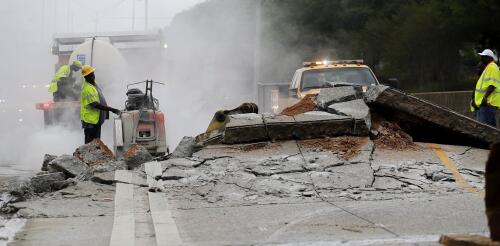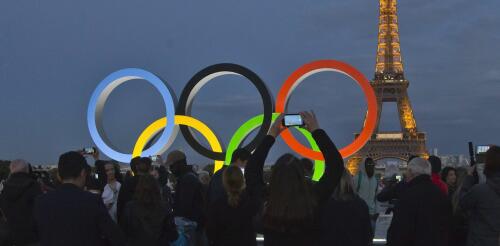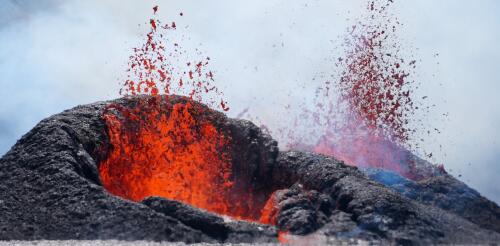Heat
Summer 2024’s record heat is creating problems for transportation infrastructure, from roads to rails. New York’s Third Avenue Bridge, which swings open for ship traffic on the Harlem River, was stuck for hours after its metal expanded in the heat and it couldn’t close. Roads have buckled on hot days in several states, including Washington and Wisconsin. Amtrak warned passengers to prepare for heat-related problems hours before a daylong outage between New York and New Jersey; the risks to power lines and rails during high temperatures are a growing source of delays for the train system. It doesn’t help that the worsening heat is hitting a U.S. infrastructure system that’s already in trouble. The American Society of Civil Engineers gave U.S. infrastructure an overall grade of C- in its latest national Infrastructure Report Card, released in 2021. While there has been some improvement – about 7.5% of U.S. bridges were in poor condition, compar...
Europe is in the midst of a heat wave, and while Olympic athletes in Paris for the 2024 Summer Games might be spared the worst of it, the weather will still be hot. As global temperatures have risen, major sporting events like the Olympics and FIFA World Cup have had to adapt to high heat and extreme storms to keep athletes and fans safe and allow the games to go on. Olympic organizers have moved events such as marathons to early mornings and even to cooler cities. FIFA, the governing body for world soccer, pushed the 2022 Men’s World Cup back from its usual time in June to late November so it could be held in Qatar. Many of the Olympic events, such as beach volleyball, will be played outside in the heat. AP Photo/Thomas Padilla The heat risks and the environmental impact of major sporting events have led some people to question whether these events should be held at all. But as someone who st...
Coast to coast, millions of Americans are experiencing sweltering temperatures this summer, with seemingly little relief in sight. For people who struggle to access or afford air conditioning, the rising need for cooling is a growing crisis. An alarming number of Americans risk losing access to utility services because they can’t pay their bills. Energy utility providers in 2022 shut off electricity to at least 3 million customers who had missed a bill payment. Over 30% of these disconnections happened in the three summer months, during a year that was among the hottest on record. In some cases, the loss of service lasted for just a few hours. But in others, people went without electricity for days or weeks while scrambling to find enough money to restore service, often only to face disconnection again. As researchers who study energy justice and energy insecurity, we believe the United States is in the midst of a disconnection crisis. We started tracking these disconnect...
Curious Kids is a series for children of all ages. If you have a question you’d like an expert to answer, send it to curiouskidsus@theconversation.com. Could we use volcanoes to make electricity? – Lawrence, age 7, Dublin, California Turning red-hot lava from an active volcano into electricity would be dangerous and unreliable. Volcanoes don’t erupt on predictable schedules, and lava cools too quickly. But many countries, including the U.S., have found ways to tap volcanic heat to make electricity. Geothermal energy comes from heat generated by natural processes deep within the Earth. In most areas, this heat only warms rocks and underground water near the surface. In volcanically active regions, however, the heat is much more intense. Sometimes it melts rock, forming magma. Volcanoes act like giant heat vents, raising magma closer to Earth’s surface. Some of this mo...
As intense heat breaks records around the world, a little-reported fact offers some hope for cooling down cities: Under even the most intense periods of extreme heat, some city blocks never experience heat wave temperatures. How is this possible? Civilizations have recognized the power of cities to heat themselves up and cool themselves for centuries. City architects in ancient Rome called for narrowing streets to lessen late afternoon temperatures. Narrow streets were found to cool the air by limiting the area exposed to direct sunlight. The whitewashed architecture of the Greek Isles demonstrates another long-practiced strategy. Light-colored walls and roofs can help cool cities by reflecting incoming sunlight. Whitewashed buildings on the Greek island of Folegandros help deflect the heat rather than absorbing it. Etienne O. Dallaire via Wikimedia, CC BY In hot and humid regions of the southern...




